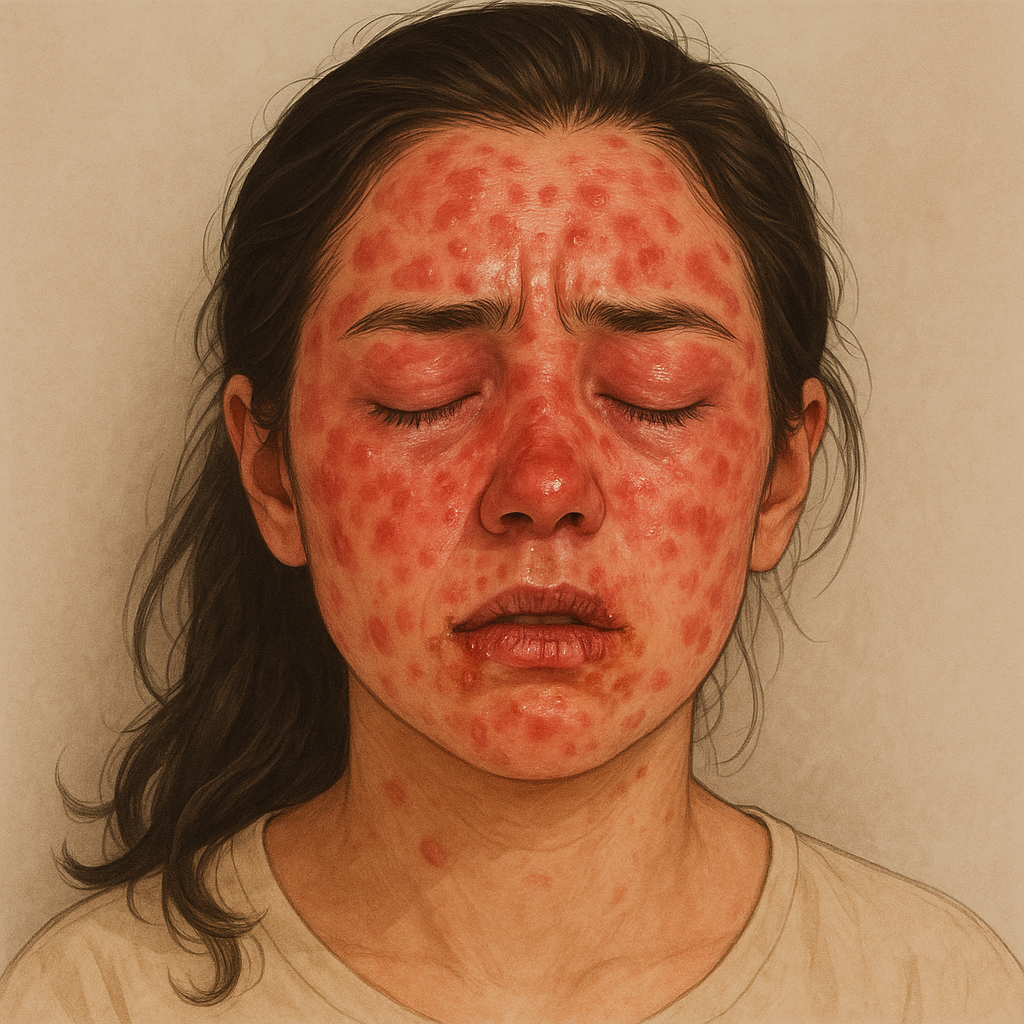News
Mouth Sores That Won’t Heal? Could It Be Pemphigus Vulgaris?
autoimmune mouth disease blistering mouth disease chronic mouth ulcers dental autoimmune disease immune system disorders mouth blister causes mouth sores that won't heal non-healing oral lesions oral autoimmune symptoms oral biopsy oral erosion causes oral pemphigus painful mouth sores pemphigus awareness pemphigus diagnosis pemphigus symptoms pemphigus treatment pemphigus vulgaris persistent mouth ulcers skin and mouth sores
Persistent mouth sores can be frustrating, painful, and deeply concerning—especially when they refuse to heal. While many ulcers are caused by minor irritations or viral infections, some may be a sign of something more serious. Among the rarer yet more severe causes is pemphigus vulgaris, an autoimmune condition that often begins with painful, non-healing blisters or erosions in the mouth before affecting other parts of the body.
Pemphigus vulgaris is frequently misdiagnosed in its early stages because its symptoms mimic those of more common conditions like aphthous ulcers or oral thrush. However, catching it early is critical, as the disease can rapidly progress and lead to severe complications without proper treatment. In this article, we’ll explore the symptoms, causes, and diagnosis of pemphigus vulgaris—plus how to differentiate it from other causes of stubborn mouth sores and what to do if you suspect this rare but serious disease.
Causes of Leg Discomfort at Night: Exploring Restless Leg Syndrome
diagnosing RLS dopamine RLS iron deficiency RLS leg discomfort at night leg discomfort solutions leg twitching at night magnesium leg cramps natural remedies for RLS neurological sleep disorders night leg cramps nighttime leg pain restless leg syndrome RLS causes RLS during pregnancy RLS support RLS symptoms RLS treatments sleep disorders sleep relief tingling legs
If you’ve ever found yourself tossing and turning at night because of an odd, uncomfortable sensation in your legs, you’re not alone. Many people experience leg discomfort in the evening hours—an irresistible urge to move the legs, crawling or tingling feelings, or deep aches that seem to worsen with rest. For many, these are the hallmark symptoms of Restless Leg Syndrome (RLS), a neurological condition that can significantly interfere with quality of sleep and overall well-being.
Also known as Willis-Ekbom disease, RLS affects millions of people worldwide and often goes undiagnosed or misattributed to stress or insomnia. But it’s more than just “fidgety legs.” Understanding what causes this condition, how it's diagnosed, and what treatment options are available can make a major difference in managing symptoms and getting a restful night's sleep. In this article, we’ll explore the causes of nighttime leg discomfort, with a deep dive into Restless Leg Syndrome and related conditions.
Stevens-Johnson Syndrome: Symptoms, Causes & Emergency Treatment
autoimmune skin reaction drug-induced skin reaction early signs of SJS emergency skin reaction life-threatening rash medication allergy rash mucous membrane blisters rare skin diseases SJS causes SJS diagnosis SJS hospital care SJS symptoms SJS treatment SJS warning signs skin blistering disorder skin necrosis skin peeling emergency Stevens-Johnson Syndrome supportive skin care toxic epidermal necrolysis
Stevens-Johnson Syndrome (SJS) is a rare but life-threatening skin reaction that demands immediate medical attention. Often triggered by certain medications or infections, SJS begins with flu-like symptoms and quickly progresses to widespread blistering and peeling of the skin and mucous membranes. Because the condition resembles severe burns, it requires hospitalization and, in many cases, intensive care.
Early recognition of symptoms is crucial. What starts as a mild rash or sore throat can escalate within hours to a critical emergency. Understanding the warning signs, common triggers, and treatment protocol can help save lives. In this article, we’ll explore how SJS presents, who is at risk, what causes it, and what emergency steps must be taken to improve outcomes and reduce long-term complications.
Duchenne Muscular Dystrophy: Symptoms, Causes, and Treatment
caregiver resources dmd clinical trials dmd diagnosis dmd symptoms dmd treatment duchenne muscular dystrophy duchenne vs becker dystrophin deficiency exon skipping gene therapy dmd genetic disorders heart complications dmd muscle weakness muscular dystrophy in children muscular dystrophy progression muscular dystrophy research pediatric muscular dystrophy physical therapy dmd respiratory care wheelchair support
Duchenne Muscular Dystrophy (DMD) is one of the most severe and common types of muscular dystrophy, primarily affecting boys in early childhood. Characterized by progressive muscle weakness and degeneration, this genetic disorder impacts every aspect of life—from mobility and heart function to respiratory health and emotional well-being. Though it currently has no cure, advancements in research and treatment are helping patients live longer, more fulfilling lives than ever before.
Understanding the full scope of DMD—including its symptoms, genetic causes, diagnostic process, and current treatment options—is essential for affected families, caregivers, educators, and medical professionals. This guide will walk you through everything you need to know about Duchenne Muscular Dystrophy, offering a clear and compassionate overview of what to expect and how to manage this challenging condition.
Pellagra: Symptoms, Causes & Prevention
causes of pellagra corn-based diet deficiency dementia from pellagra dermatitis pellagra diarrhea and nutrition historical diseases mental health pellagra niacin deficiency nutritional deficiency pellagra pellagra diagnosis pellagra disease pellagra prevention pellagra risk factors pellagra treatment skin rash pellagra symptoms of pellagra the four Ds of pellagra vitamin B3 vitamin B3 deficiency
Pellagra may sound like a rare historical condition, but it's a serious nutritional disorder that still affects people around the world today. This disease is caused by a deficiency in niacin (vitamin B3) or tryptophan, an amino acid that helps the body produce niacin. While once rampant in parts of Europe and the southern United States during the early 20th century, pellagra can still arise in populations with limited access to balanced nutrition or due to certain medical conditions that affect nutrient absorption.
The hallmark signs of pellagra are often summed up by the "Four Ds": dermatitis, diarrhea, dementia, and—if left untreated—death. These symptoms reflect the devastating impact niacin deficiency can have on the skin, digestive tract, nervous system, and brain. In this article, we’ll explore the causes of pellagra, break down its classic symptoms, and offer insights on diagnosis, treatment, and prevention.





